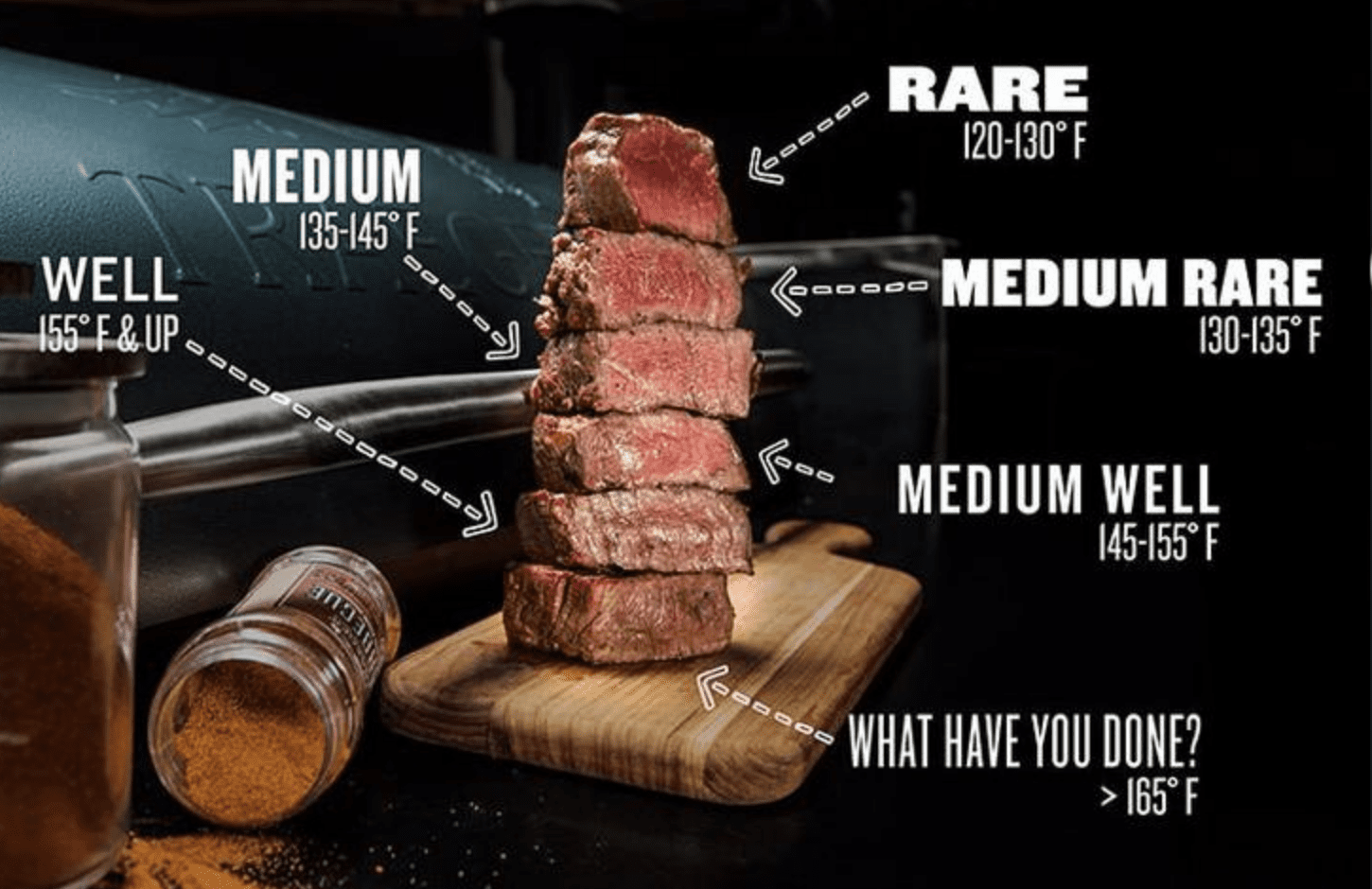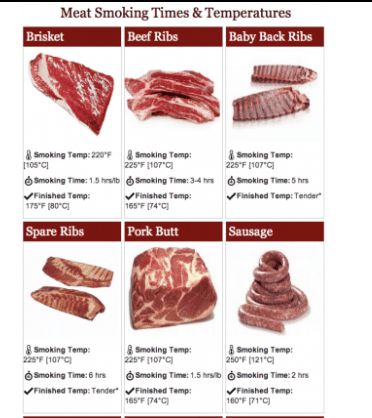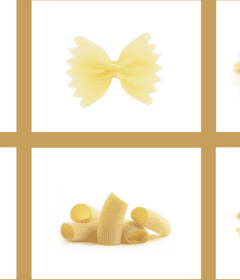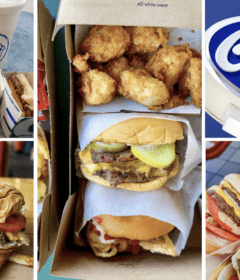The Temperature of Meat

The Temperature of Meat
Whether cooking a burger or roast ing a pork tenderloin, you should always take the temperature of the area of the meat that will be the last to finish cooking, which is the thickest part or, in some cases, the center. Bones conduct heat, so if the meat you are cooking contains bone, make sure that the thermometer is not touching it. For roasts, take more than one reading to confirm you’re at the right point of doneness.
Since the temperature of meat will continue to rise as it rests, an effect called carryover cooking, meat should be removed from the oven, grill, or pan when it’s 5 to 10 degrees below the desired serving temperature. Carryover cooking doesn’t apply to poultry and fish (they don’t retain heat as well as the dense muscle structure in meat), so they should be cooked to the desired serving temperatures. The following temperatures should be used to determine when to stop the cooking process.
The USDA recommends steaks and roasts be cooked to 145°F (medium) and then rested for at least 3 minutes. To ensure food safety, ground beef should be cooked to a minimum 160°F (well done). Be sure to check with a thermometer, as color alone is not a fool proof indicator.

The Temperature of Meat- Beef / Lamb
Rare
115 to 120 degrees
(120 to 125 degrees after rest ing)
Medium-Rare
120 to 125 degrees
(125 to 130 degrees after resting)
Medium
130 to 135 degrees
(135 to 140 degrees after resting)
Medium-Well
140 to 145 degrees
(145 to 150 degrees after resting)
Well-Done
150 to 155 degrees
(155 to 160 degrees after rest ing)
The Temperature of Meat – Pork
Medium
140 to 145 degrees
(145 to 150 degrees after resting)
Well -Done
150 to 155 degrees
(155 to 160 degrees after resting)
The Temperature of Meat – The Importance of Resting
You’ll never see anyone in the test kitchen cut into meat straight from the oven; we always let it rest first. When exposed to heat, proteins undergo a radical transformation in which they uncoil then reconnect in haphazard structures. This process, called coagulation, is why proteins become firm and lose moisture as they cook.
The longer the meat cooks, the tighter the proteins coagulate, driving liquid toward both the surface and the center of the meat, much like wringing a towel. If you cut the meat immediately after cooking, the liquid suspended between the interior proteins would simply pool on the carving board o r plate.
The best way to prevent this is to rest the roast. Al lowing the protein molecules to relax after cook.ing slows the rate at which they continue to squeeze the liquid between their tight coils and increases their capacity to retain moisture. A short rest on the carving board will decrease the amount of liquid lost during carving by about 40 percent.
More on Cooking Temperatures >>



